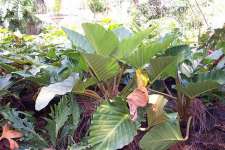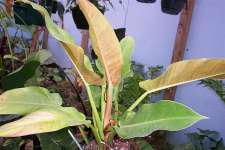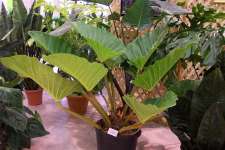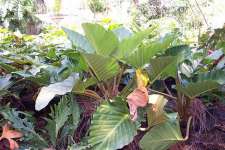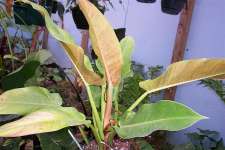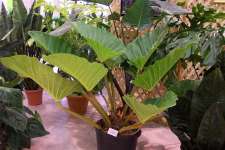|
www.ExoticRainforest.com
----- Original Message -----
From: Brian Williams
To: Discussion of aroids
Sent: Wednesday, August 22, 2007 10:45 PM
Subject: [Aroid-l] Philo melinonii
Here are a few pics. I have not ran into this philo very often over the years. I know only a handful of great aroiders who are growing them. I believe it is a must have but it does take up a lot of room. My plant does not look anything like this form yet they dont seem to look similar really till they begin to mature. I thought my plant was mislabled for sometime but it has sense started looking more like the more mature forms.
The plant in the middle is my plant. It was from a extremely! reliable source. Even now after looking at the photos I wonder if mine maybe a different form??
------------------------------------------------------------------------------
_______________________________________________
Aroid-L mailing list
Aroid-L at www.gizmoworks.com
http://www.gizmoworks.com/mailman/listinfo/aroid-l
-------------- next part --------------
An HTML attachment was scrubbed...
URL: http://www.gizmoworks.com/mailman/private/aroid-l/attachments/20070823/507c291f/attachment-0001.htm
-------------- next part --------------
A non-text attachment was scrubbed...
Name: not available
Type: image/jpeg
Size: 123061 bytes
Desc: not available
Url : http://www.gizmoworks.com/mailman/private/aroid-l/attachments/20070823/507c291f/attachment-0003.jpeg
-------------- next part --------------
A non-text attachment was scrubbed...
Name: not available
Type: image/jpeg
Size: 81940 bytes
Desc: not available
Url : http://www.gizmoworks.com/mailman/private/aroid-l/attachments/20070823/507c291f/attachment-0004.jpeg
-------------- next part --------------
A non-text attachment was scrubbed...
Name: not available
Type: image/jpeg
Size: 79236 bytes
Desc: not available
Url : http://www.gizmoworks.com/mailman/private/aroid-l/attachments/20070823/507c291f/attachment-0005.jpeg
| 


